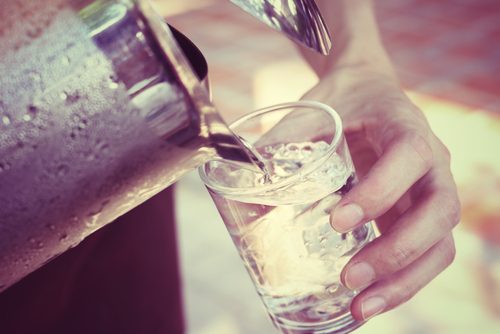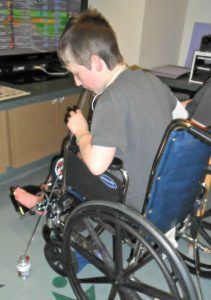Creatively Compliant: How My Son Has Managed His Fluid Intake

In a previous column, I shared my son’s battle with weight loss and gain caused by illness. Equally challenging has been his efforts to meet daily water intake goals.
How much water a healthy person should drink varies according to height, weight, activity level, and environmental conditions. Helpful online intake calculators can estimate your individual needs.
When living with pulmonary hypertension (PH), more concerns factor into the fluid equation. A doctor should be consulted to help assist with a personalized plan.
My son Cullen’s previous battle with weight, water, and edema (swelling in the ankles and legs) was like a three-ring circus. Trying to focus on all of them at the same time was frustrating. Excitement over a few pounds gained was often diminished by the realization that the cause was fluid retention. His doctor would adjust his diuretics and in the next breath ask if he was drinking enough water.
Cullen was 8 when he was diagnosed with PH, so it took some explaining to help him understand how one thing can affect the other. Also perplexing to the child was why on earth doctors and nurses were asking him the color of his pee. Indignantly, he would whisper, “That’s just weird, Mom!”
To answer my son’s question in simple terms, dark yellow urine could be a symptom of dehydration, and too clear a warning that he might be drinking too much. The job of the diuretics was to help relieve the water buildup in his body, making it easier for his heart to pump. Otherwise, the right ventricle of his heart, already stressed by PH, would rebel with shortness of breath, fatigue, and chest pains.
The evil behind the diuretic was an increased need to urinate. It felt counterintuitive to Cullen that he was required to drink at least a liter of water a day. If he didn’t then he risked dehydration and a possible emergency room visit to receive intravenous fluids.
When Cullen’s PH deteriorated to the point of right heart failure, balancing his water intake became increasingly complicated and important. We were asked to keep a daily chart of how much he drank and expelled.
A trick that helped him stay on track was taking big sips throughout the day instead of downing large amounts of water in one sitting. When watching television, we made a rule that during commercials he had to take sips of water. If he was playing a video game, before he could start a new one, he had to do the same. We applied this approach to many enjoyable activities.
Cullen had become so sick with PH and heart failure that eating and drinking frequently made him feel nauseous, caused reflux, or even made him aspirate. Keeping these symptoms in mind, his doctor approved counting fluids consumed through foods as an option to help reach his daily intake goal. Soups, smoothies, and even ice cream were acceptable choices. He enjoyed watermelon, his favorite fruit, but in moderation — too much and his edema would flair.
Discharges from hospitalizations were sometimes reliant on fluid intake and output. A nurse once made a deal with Cullen that he could play video games if he agreed to drink water while playing. To make this bribe easier to swallow (pun intended), a friend suggested linking straws to stretch from the floor to his mouth. That way Cullen could play and drink at the same time. He even took the idea home with him and put it to use.
Through creativity and compromise, Cullen learned to comply with his fluid requirements. These habits have also helped him as a heart and double-lung transplant recipient. Eating well and staying hydrated is as important as the medications he takes to keep his new organs healthy.
He is doing well, but his kidneys have taken a hit from the immunosuppressant (anti-rejection) drugs. Living with stage 3 kidney disease has brought him full circle back to diuretics and strict orders from his doctor to drink at least 2.5 liters of water a day. When he does as he’s told, Cullen feels great and his kidneys remain stable. If he doesn’t comply then his creatinine levels and blood pressure climb, and he becomes symptomatic with migraines.
Cullen is an adult now, so no more bribes involving special straws. He always keeps a bottle of water next to him, and as the phrase suggests, “Bottoms up!”
***
Note: Pulmonary Hypertension News is strictly a news and information website about the disease. It does not provide medical advice, diagnosis, or treatment. This content is not intended to be a substitute for professional medical advice, diagnosis, or treatment. Always seek the advice of your physician or other qualified health provider with any questions you may have regarding a medical condition. Never disregard professional medical advice or delay in seeking it because of something you have read on this website. The opinions expressed in this column are not those of Pulmonary Hypertension News or its parent company, Bionews Services, and are intended to spark discussion about issues pertaining to pulmonary hypertension.









Leave a comment
Fill in the required fields to post. Your email address will not be published.